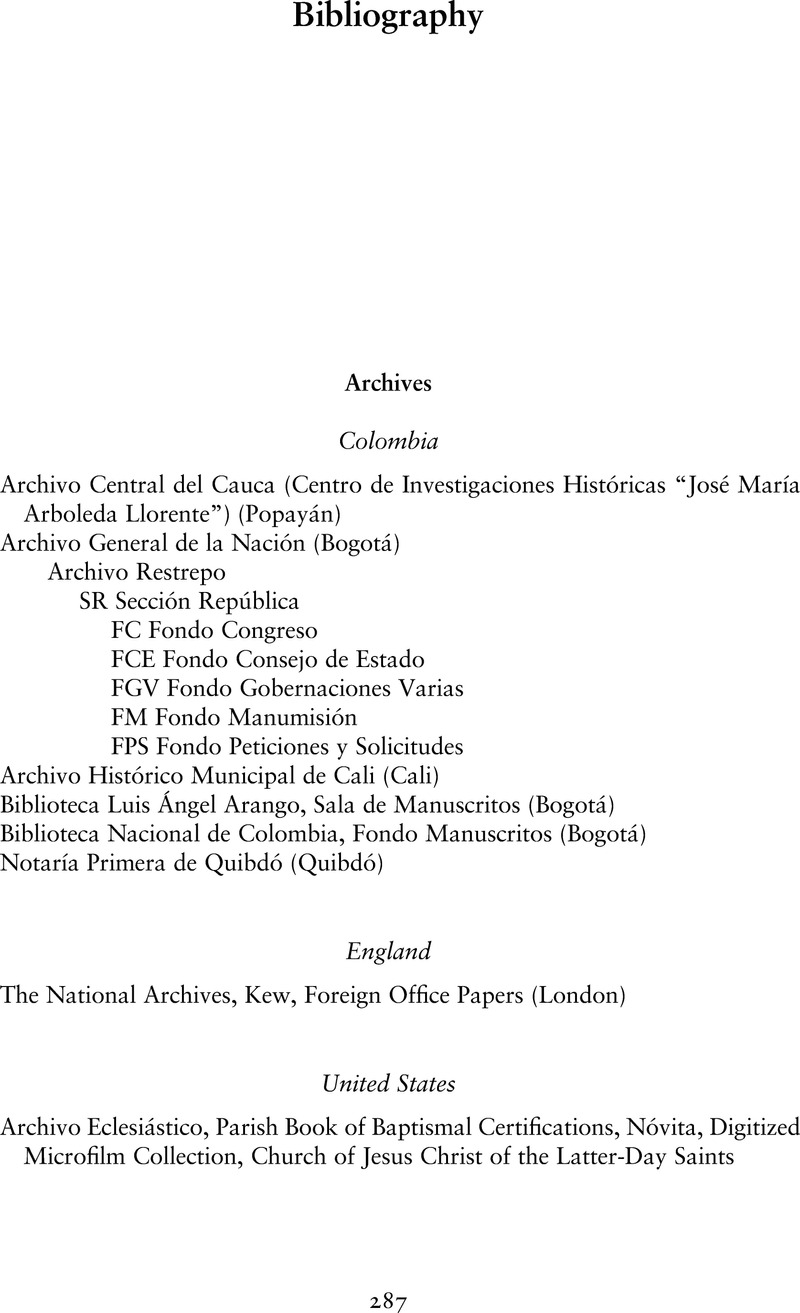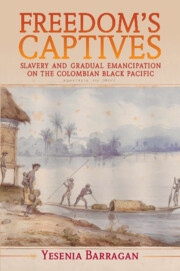Book contents
- Freedom’s Captives
- Afro-Latin America
- Freedom’s Captives
- Copyright page
- Dedication
- Epigraph
- Contents
- Figures
- Tables
- Acknowledgments
- Introduction
- Part I The Social Universe of the Colombian Black Pacific
- Part II The Time of Gradual Emancipation Rule
- Part III Final Abolition and the Afterlife of Gradual Emancipation
- Epilogue
- Bibliography
- Index
- References
Bibliography
Published online by Cambridge University Press: 18 June 2021
- Freedom’s Captives
- Afro-Latin America
- Freedom’s Captives
- Copyright page
- Dedication
- Epigraph
- Contents
- Figures
- Tables
- Acknowledgments
- Introduction
- Part I The Social Universe of the Colombian Black Pacific
- Part II The Time of Gradual Emancipation Rule
- Part III Final Abolition and the Afterlife of Gradual Emancipation
- Epilogue
- Bibliography
- Index
- References
Summary

- Type
- Chapter
- Information
- Freedom's CaptivesSlavery and Gradual Emancipation on the Colombian Black Pacific, pp. 287 - 314Publisher: Cambridge University PressPrint publication year: 2021



